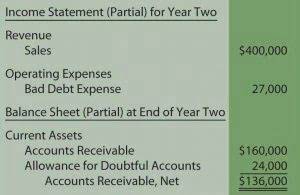- Em que podemos lhe ajudar?
- 21 2240-0232
- 21 99624-5304
- [email protected]
Oil and Gas Accounting, Financial Reporting, and Tax Update Deloitte US
Где безопасно хранить криптовалюту? О чем молчат крипто-биржи и как эффективно уберечь ваши активы Крипто на vc ru
Abril 3, 2023Operating Performance Ratios: Operating Cycle
Abril 19, 2023Oil and Gas Accounting, Financial Reporting, and Tax Update Deloitte US

“I think a lot of times (in) our legislative process… we vote on bills based on hopes and dreams,” Rubio said. A cross-reference of donations with voting records indicates that oil money alone doesn’t necessarily translate to votes. CBS News California did a deep dive into the CalMatters Digital Democracy Database, which tracks every dollar donated to, and every vote cast by, every lawmaker in California.
Oil & Gas Financial Modeling 101
This program was developed and certified by the Canadian Association of Petroleum Production Accounting (CAPPA).This program is offered full-time on the SAIT campus via an intensive, full-time 35-week program accredited by Alberta Advanced Education. The effect of choosing one accounting method over another is apparent when periodic financial results involving the income and cash flow statement are compared. Each method highlights the individual costs, which fall into the categories of acquisition, exploration, development, and production, differently. However, such a comparison also points out the impact on periodic results caused by differing levels of capitalized assets under the two accounting methods. The theory behind the FC method holds that, in general, the dominant activity of an oil and gas company is simply the exploration and development of oil and gas reserves. Therefore, companies should capitalize all costs they incur in pursuit of that activity and then write them off over the course of a full operating cycle.
- Assets are generally recorded at their original cost, which is the amount paid to acquire them.
- The Department of Energy is helping finance the construction of up to six of the company’s hydrogen production plants.
- When you project a natural resource company’s statements, you begin by projecting its production by segment based on its reserves and its historical patterns.
- This section summarizes recently enacted federal legislation affecting the financial reporting of income taxes and new and proposed FASB guidance on accounting for income taxes.
Financial Reporting Standards
- Texas families deserve real climate solutions–not more giveaways to the oil and gas industry.
- When California lawmakers, especially Democrats, accept oil money or vote against seemingly climate-friendly bills, they are often criticized or accused of being beholden to the oil industry.
- Accurate accounting helps in valuing these reserves, determining depletion, and providing insights into the company’s overall asset base, influencing strategic decisions and financial planning.
- See the Canadian Association of Petroleum Production Accounting (CAPPA) website for prerequisites and graduation requirements.
- Production Sharing Contracts (PSCs) are a prevalent arrangement in the oil and gas industry, particularly in regions where governments seek to retain ownership of natural resources while leveraging the expertise and capital of private companies.
- Adherence to financial reporting standards is paramount in the oil and gas industry, given the sector’s complexity and the significant financial stakes involved.
Many oil and gas projects involve joint ventures where multiple companies collaborate. Joint venture accounting is crucial to accurately reflect each participant’s share of costs, revenues, and other financial aspects. CFO is basically net income with non-cash charges like DD&A added back, so, despite a relatively lower charge for DD&A, CFO for an SE company will reflect the net income impact from expenses relating to unsuccessful exploration efforts.

Accelerate Business Transformation

Taxation in the oil and gas sector is a multifaceted issue that significantly influences the financial health of companies operating within this industry. Governments often impose a variety of taxes and royalties to capture a share of the revenues generated from natural resource extraction. These can include corporate income taxes, production taxes, and specific levies such as severance taxes. The complexity of these tax regimes requires companies to maintain meticulous records and employ sophisticated tax planning strategies to ensure compliance and optimize their tax liabilities. oil and gas accounting teaches the basics of petroleum production accounting as it relates to the petroleum industry.
- Both processes ensure that the costs of these assets are matched with the revenues they generate, providing a more accurate picture of a company’s financial performance.
- The historical cost principle emphasizes reliability and verifiability in financial reporting.
- He had become a father, with two daughters, and didn’t want them to live in a world reliant on burning oil, gas and coal, warming the planet.
- In the United States, Deloitte refers to one or more of the US member firms of DTTL, their related entities that operate using the “Deloitte” name in the United States and their respective affiliates.
- Each method highlights the individual costs, which fall into the categories of acquisition, exploration, development, and production, differently.
Hedging Activities

This mechanism ensures that the contractor can recover its investment before sharing profits with the state. However, there are often limits on the amount of production that can be allocated to cost recovery in any given period, which can impact the contractor’s cash flow and financial planning. Oil and gas accounting is fundamental to the industry’s efficient operation, regulatory compliance, and strategic decision-making. It ensures that financial information is accurate, transparent, and aligned with industry standards, contributing to the overall integrity and sustainability of the oil and gas sector. Accurate accounting helps in valuing these reserves, determining depletion, and providing insights into the company’s overall asset base, influencing strategic decisions and financial planning.

LBO models are even more similar to what you see for normal companies, and just like with merger models you need to include a sensitivity analysis on commodity prices somewhere in your model. The good news is that most of the same valuation methodologies you’re used to seeing – public comps, precedent transactions, and even the DCF model – still apply to (most) oil, gas & mining companies. Under the successful efforts methodology, you expense them, and under the full cost methodology you capitalize them and add that CapEx to the PP&E on your balance sheet.

